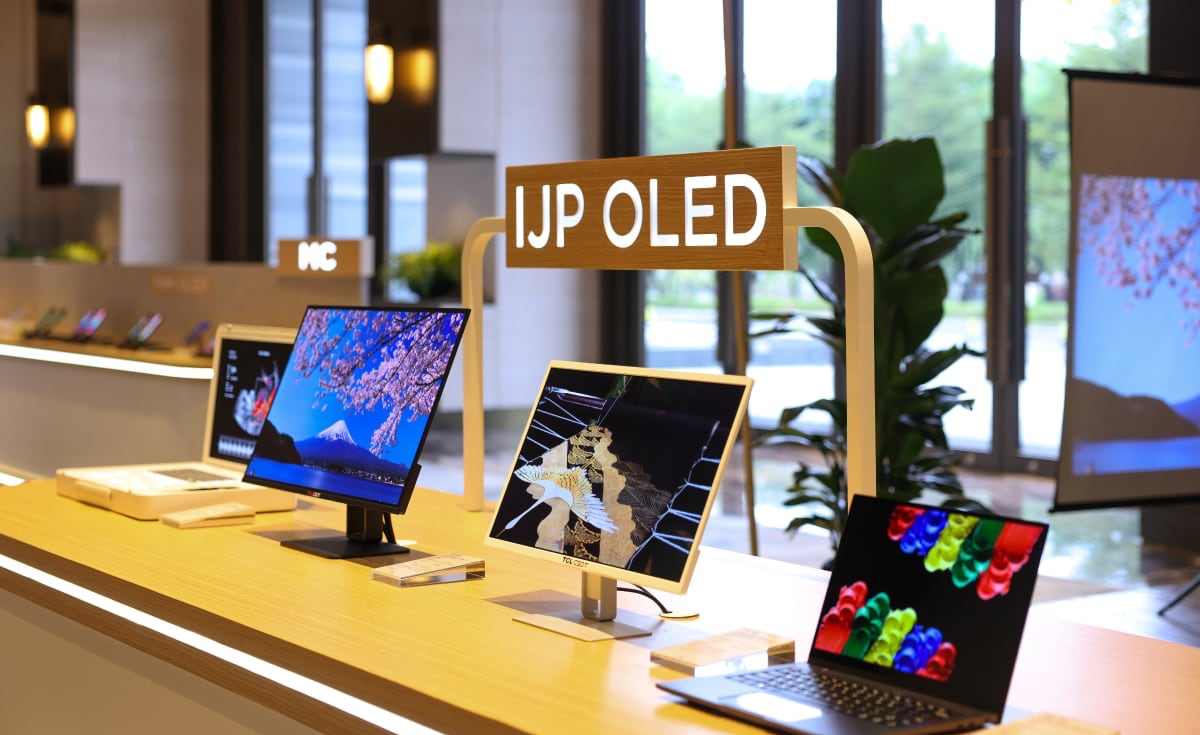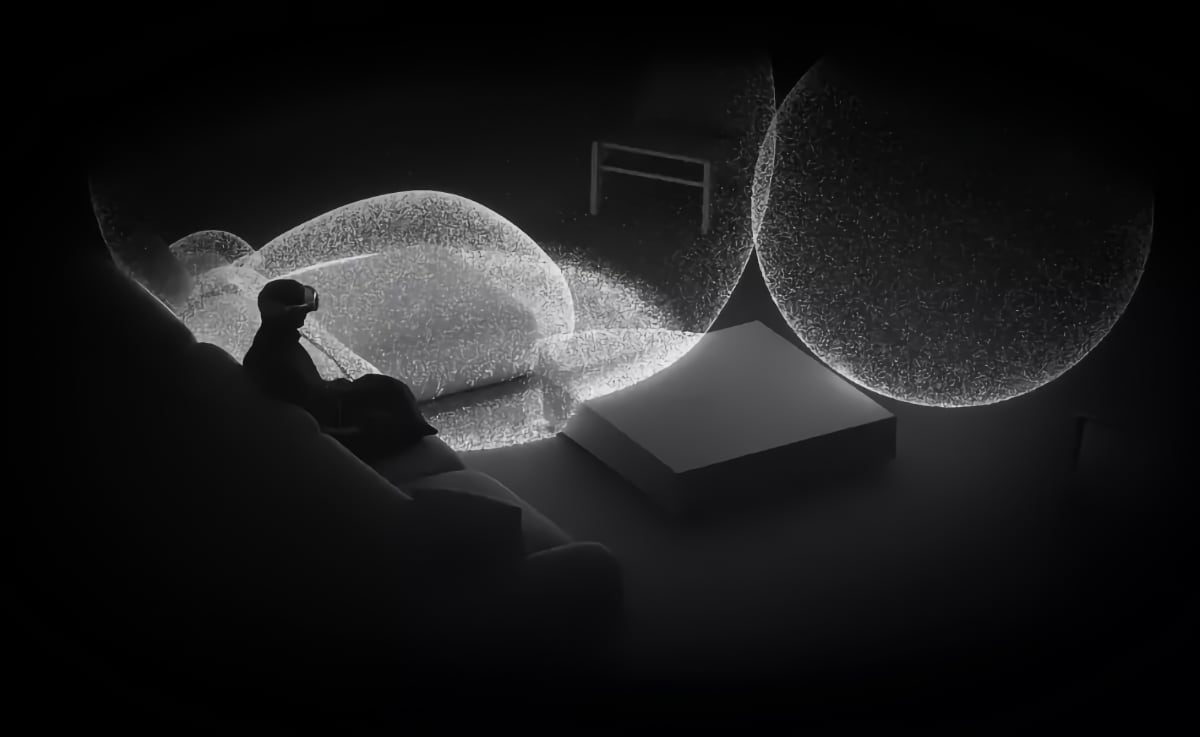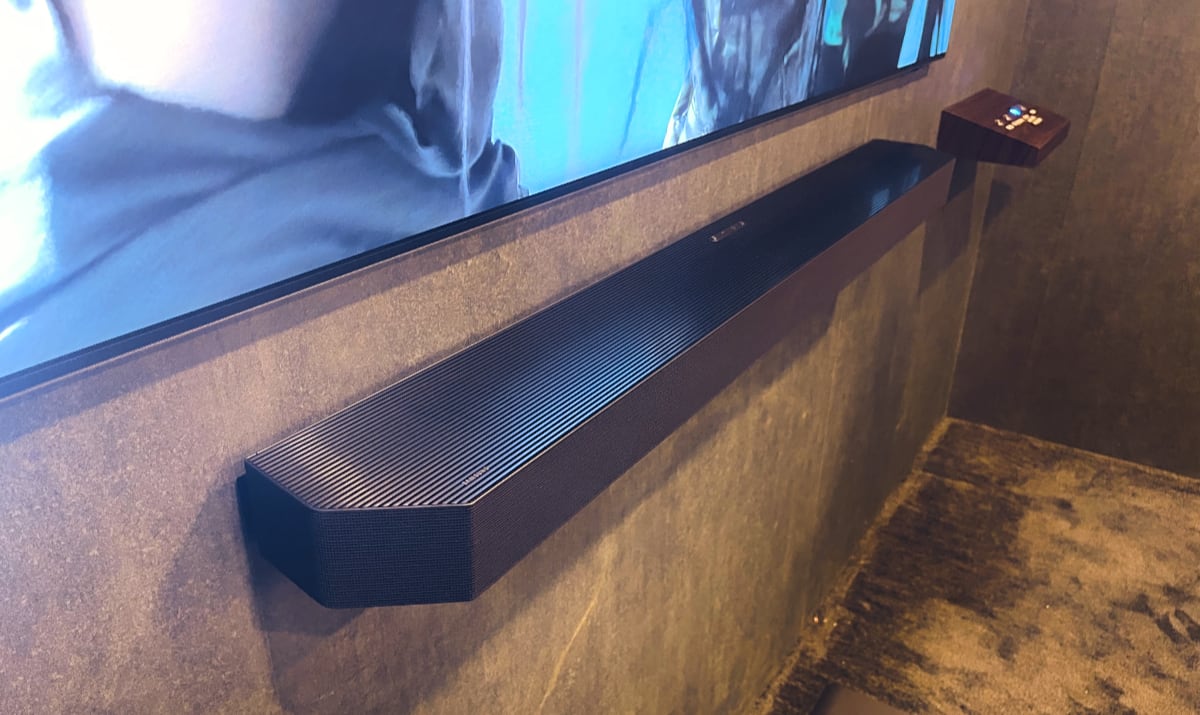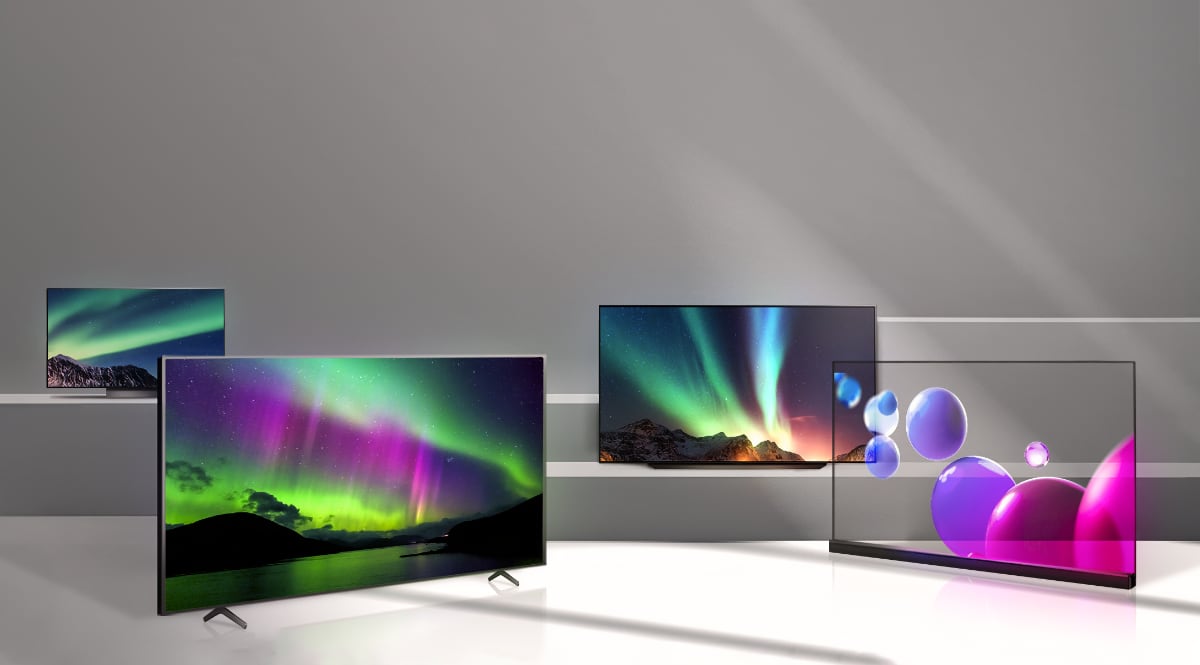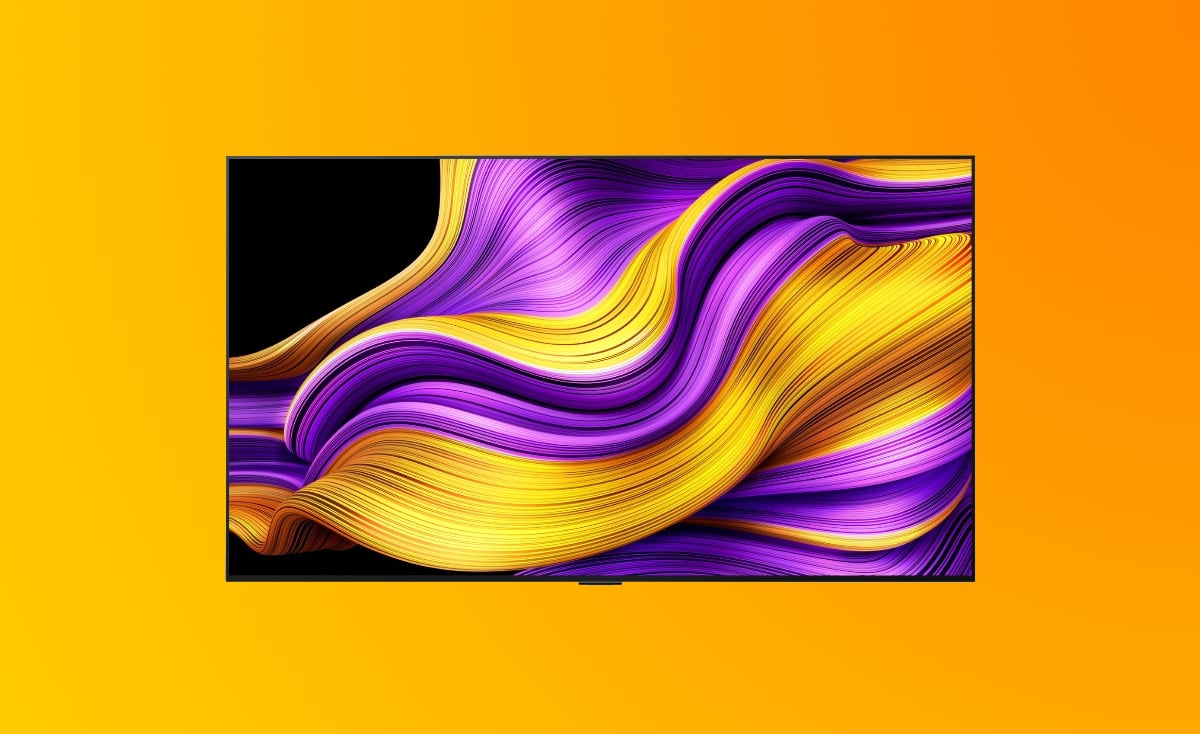LG Display and Samsung Display will soon face a strong new challenger as TCL CSOT has officially commenced mass production of inkjet-printed OLED panels.
TCL's display manufacturing arm, CSOT, announced the news at its annual conference, DTC2024.
- "Building upon 11 years of continuous research and innovation, TCL CSOT's IJP OLED technology has achieved significant leaps and breakthroughs in technical specifications, establishing new industry benchmarks," announced TCL CSOT.
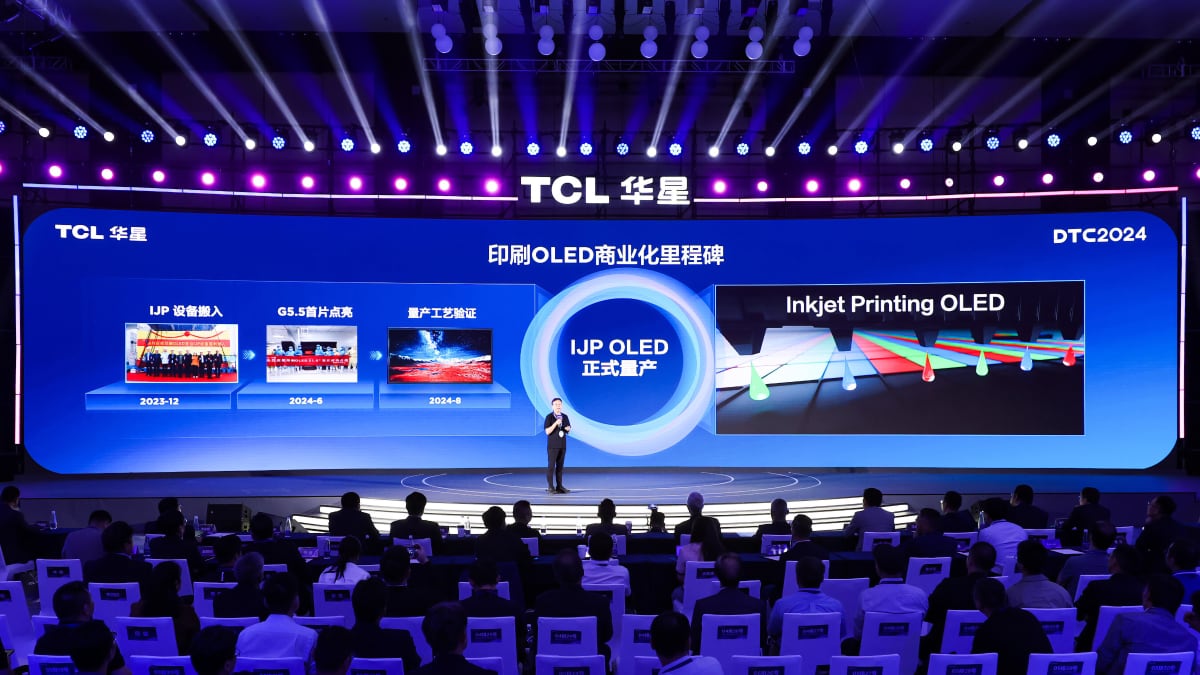
TCL CSOT announcing at DTC 2024 that it has begun mass production of printed OLED. Photo: TCL CSOT
The big news here is that TCL is using inkjet printing (IJP) to produce OLED panels, unlike its competitors. It is essentially a large printer that applies the OLED material.
- "The developed IJP OLED prototypes of various sizes and forms have all achieved excellent display effects, successfully moving IJP OLED technology into a new stage of commercialization. TCL CSOT's first mass-produced 21.6" 4K product has officially entered the mass production phase."
A printed 27-inch 4K OLED
In addition to the 21.6-inch 4K OLED, intended for medical monitors, the company unveiled a 27-inch OLED prototype – also inkjet printed.
The 27-inch model features side-by-side RGB OLED pixels, 4K resolution, 120Hz refresh rate, 250 nits of full-screen brightness, and 600 nits of peak brightness.
Also read: TCL's brighter printed RGB OLED TVs could arrive in 2025
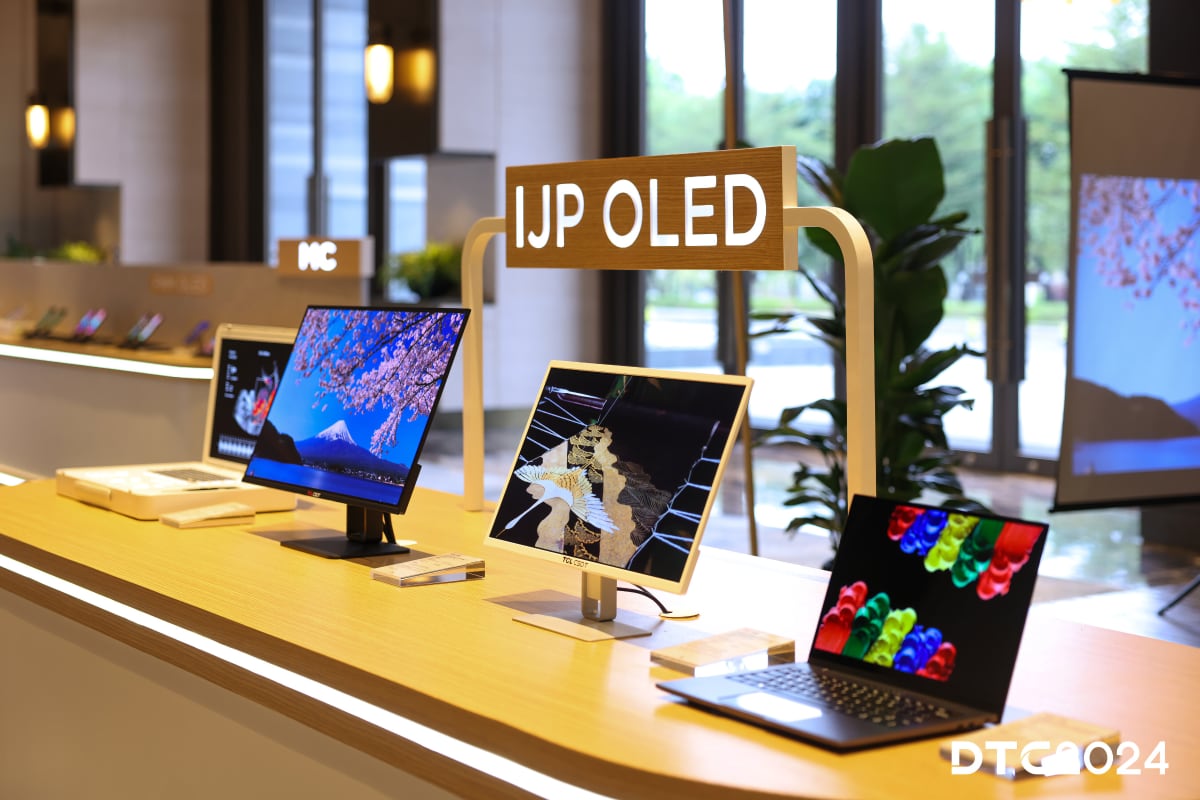
The first printed OLED panels from TCL CSOT, including the 27-inch prototype. Photo: TCL CSOT
Chinese competition for LG, Samsung
If the 27-inch goes into production in 2025, it could emerge as an alternative to LG Display and Samsung Display's OLED panels used in monitors from Asus, Dell, LG Electronics, Samsung Electronics, Sony and others.
However, the lower brightness and refresh rate of TCL's panel may be a concern.
- "In terms of image quality, IJP OLED's more accurate printing enables a pixel per inch (PPI) that exceeds the Retina Standard, with PPI>300. The side-by-side RGB structure ensures font display without color fringing, delivering crisp and clear visuals. Moreover, IJP OLED offers 2x materials efficiency and a 50% reduction in light loss due to internal reflection, resulting in higher light output efficiency compared to traditional OLED displays. This enables IJP OLED to achieve the same power consumption as FMM OLED while offering superior image quality. The IJP OLED technology also boasts a higher aperture ratio and remarkable enhancement in materials lifespan, ensuring a longer-lasting display that maintains its quality over time," explained TCL CSOT.
QD-EL displays
Once again, TCL CSOT showcased "the world's first 2.8K IJP QD-EL display" at 14 inches.
This new quantum dot-based display technology was once known as (real) QLED and also goes by the names of NanoLED and QD-LED. It achieves over 85% BT.2020 color coverage and supports a 30-120Hz variable refresh rate.
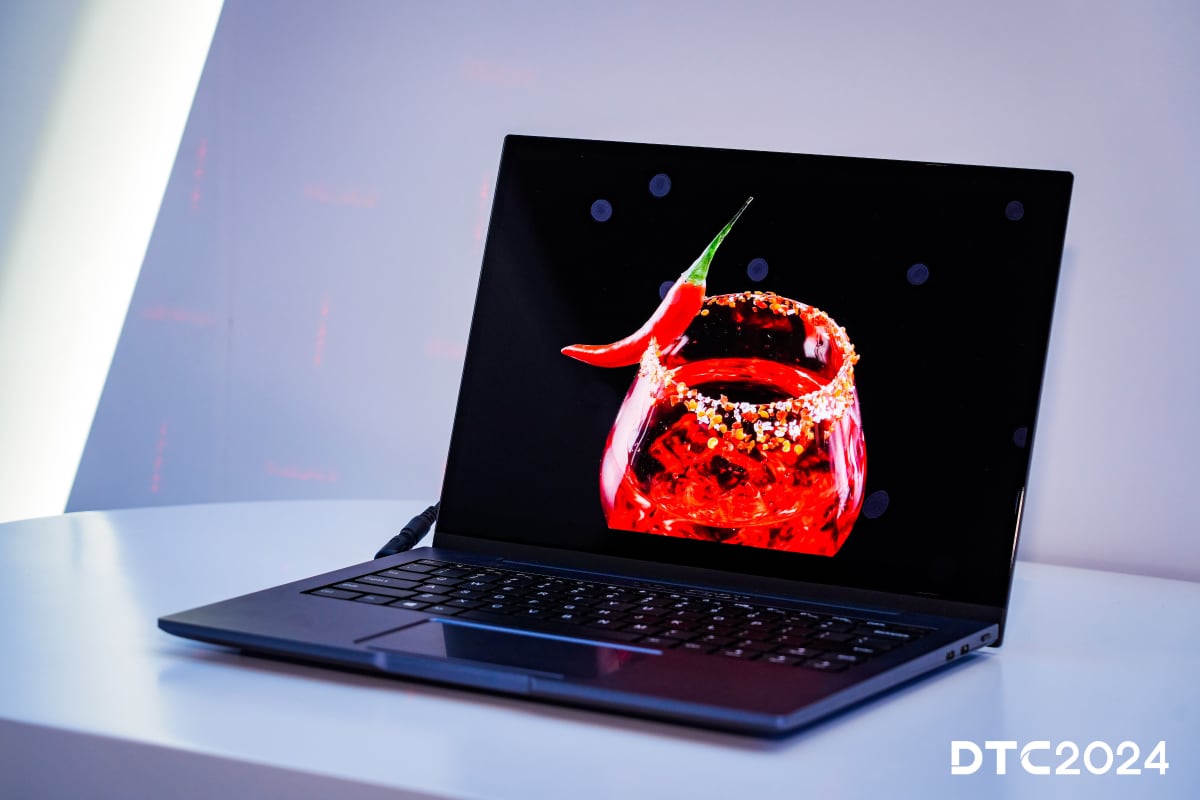
The 14-inch QD-EL display. Photo: TCL CSOT

